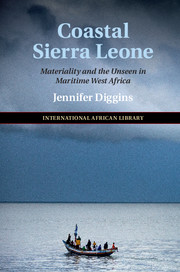Book contents
- Coastal Sierra Leone
- The International African Library
- Coastal Sierra Leone
- Copyright page
- Dedication
- Contents
- Figures
- Maps
- Acknowledgements
- A note on translation
- 1 Introduction
- 2 Context, history, methods
- 3 Economic runaways
- 4 Plantain Island sirens
- 5 ‘Potato rope’ families
- 6 Occult economies and hidden topographies
- 7 Material words
- 8 Conclusion
- Bibliography
- Index
- Titles in the series
- References
Bibliography
Published online by Cambridge University Press: 14 June 2018
- Coastal Sierra Leone
- The International African Library
- Coastal Sierra Leone
- Copyright page
- Dedication
- Contents
- Figures
- Maps
- Acknowledgements
- A note on translation
- 1 Introduction
- 2 Context, history, methods
- 3 Economic runaways
- 4 Plantain Island sirens
- 5 ‘Potato rope’ families
- 6 Occult economies and hidden topographies
- 7 Material words
- 8 Conclusion
- Bibliography
- Index
- Titles in the series
- References
- Type
- Chapter
- Information
- Coastal Sierra LeoneMateriality and the Unseen in Maritime West Africa, pp. 213 - 230Publisher: Cambridge University PressPrint publication year: 2018



